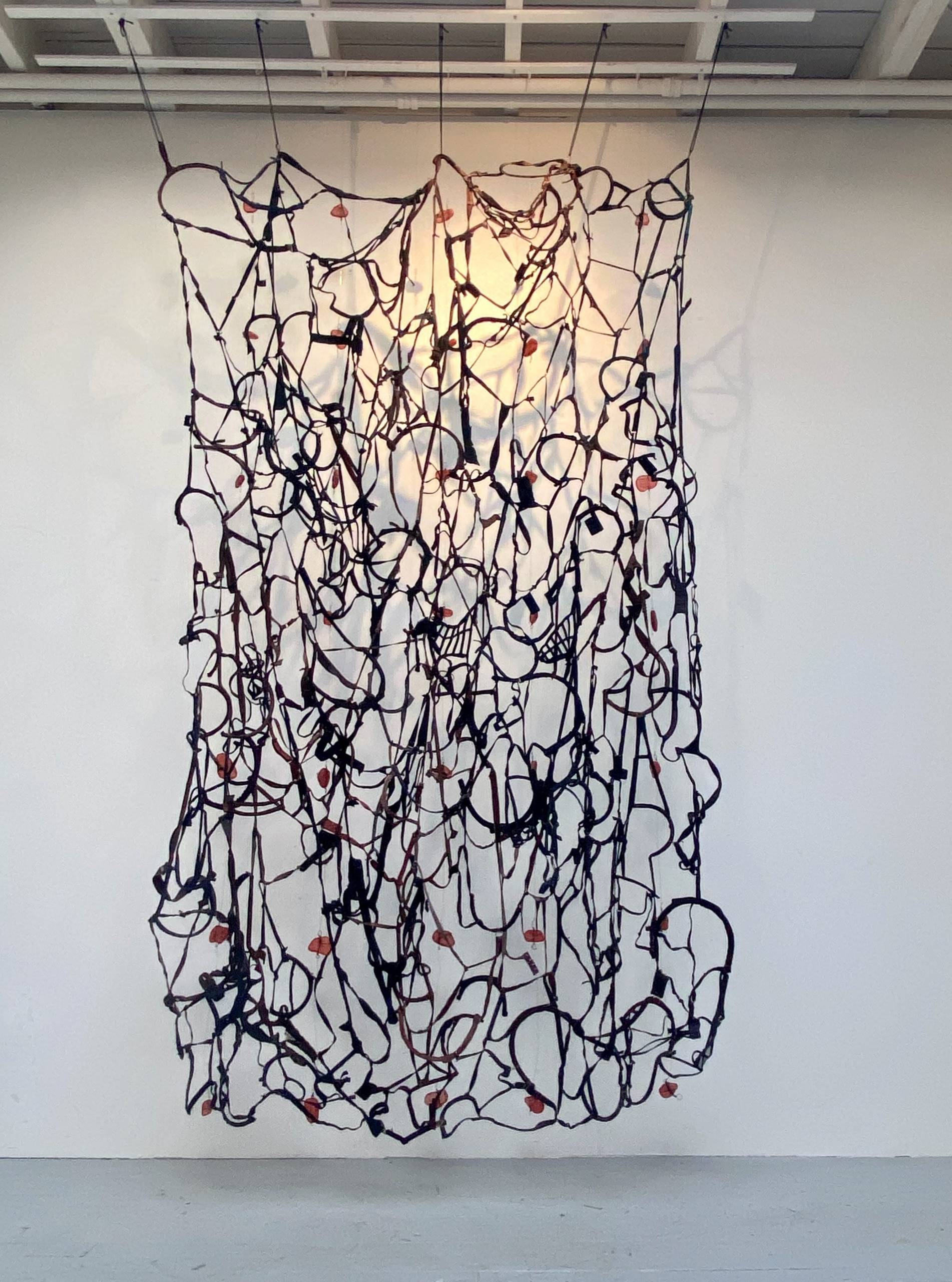‘California Jewish Open’ Seeks ‘Connection’ During Division

Many used this space as an opportunity to explain their relationship to Judaism, or how a particular work came to be. Adam Thorman reflected on growing up reading the marginalia in pages of rabbinic arguments, his lesson in thoughtfully challenging ideas (and later, traditional landscape photography).
Others took the opportunity to make explicit statements in solidarity with Palestinians, to cite their grief following Hamas’ attacks, or to express the conflicting emotions that come from having pride in one’s heritage and shame in the actions of the Israeli state.
And while these are statements issued in the context of a group setting, they aren’t necessarily a dialog. The completing factor in that exchange falls to the visitors, who may be prompted to begin conversations among themselves, or moved to introspection. Such outcomes are most likely to occur when a viewer’s own body is implicated or physically involved. Hence, some of the show’s strongest works — Meirav Ong’s Grief Stones, Anna Landa’s A Seat at the Table and Bernie Lubell’s Aspirations — are interactive.
Each of these comes with a list of instructions. Ong’s invites visitors to pick up porcelain stones and “imagine holding hands with a child in Gaza” before placing them on a pile reminiscent of a Jewish gravesite. Landa’s directs viewers to sit at a table decked out for a dinner party and feel an urgent physical reminder of our very finite existence. Lubell’s piece, a kind of zero-sum game couched in a Rube Goldberg contraption of wood, wire, video surveillance and inflatable loungers, sets up a clear dichotomy, then dismantles it. “No relationship is that simple,” he writes in his wall text.

All three of the works exist within the show’s “Human” galleries, which also contain works addressing family histories of immigration, recently discovered Jewish ancestry and notions of play. A perfect bridge between this section and “Past/Future” comes from Rebecca Ora’s haunting, relentless video Habibibuah, a split-second, infinite loop of a scene from the 2006 film Habuah (The Bubble), featuring two lovers, one Israeli and one Palestinian, nearly kissing as the camera zooms around them.
It’s in “Past/Future” that the impact of the withdrawn works becomes apparent. For each of the six missing pieces, the museum has printed the same paragraph of explanatory text and placed it beside a corresponding expanse of blank wall, “to honor the perspectives that would have been shared through these artworks, and to authentically reflect the struggle for dialogue.”
It’s a curatorial move that left this viewer torn between a yearning for the complete picture and a respect for the artists’ desire to control the presentation of their work. Without the pieces, several of which included explicit statements of “free Palestine,” what remains in the gallery is largely abstract and expressionistic. (An opening night action outside the museum by CJAFP temporarily filled this gap with live screen printing, speeches and music.)

In this gallery, as we witness a devastating assault on civilian life in Gaza, the limits of abstraction become painfully clear, as they have in past moments of violence and war. Strauss’ blurbs and the artists’ quotes are necessary reading for a complete and truly nuanced experience of California Jewish Open. Isolated from a larger body of work and without contextualizing factors, individual works, especially the abstract ones, can become unstable at best, misidentified at worst.
Juried exhibitions are difficult undertakings, and in California Jewish Open, the CJM has opted for an approach that is far more concise and discerning than something like the de Young Open. As the wall text explaining the withdrawn artworks says, we are in a moment when connection may feel insufficient or impossible. But it is important, as this show captures, even imperfectly, to try: to challenge the status quo; to enter into conversations about museum funding; to listen to artists’ demands; and to do it all with as much honesty and transparency as possible.
What is connection if not a series of attempts, failures and attempts again — to decrease the space between all of us?

